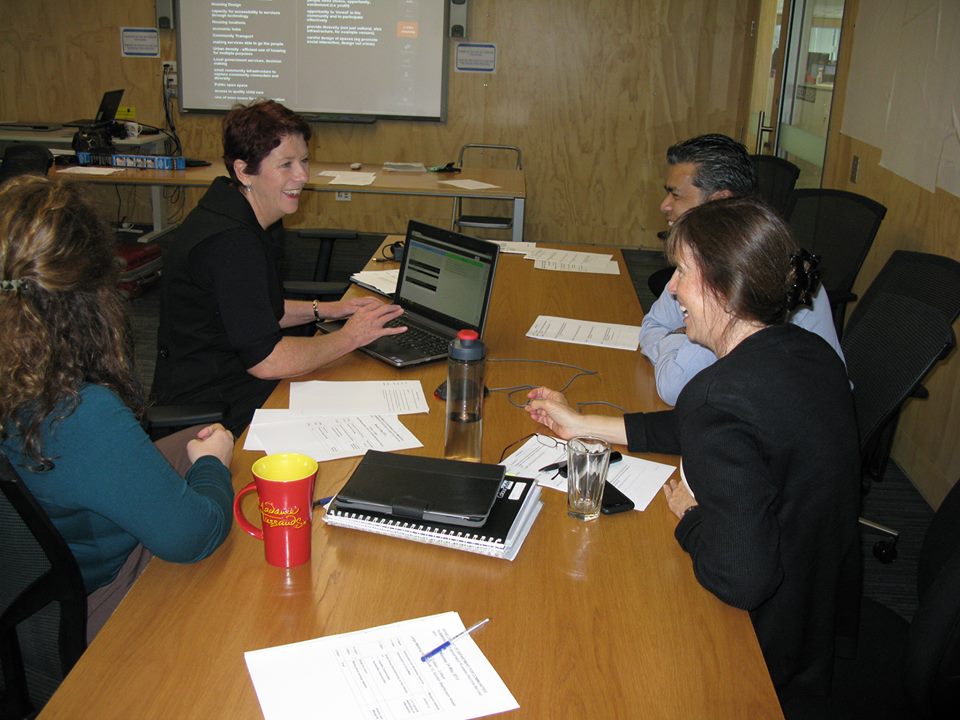Technology versus Talk- The right balance for effective brainstorming meetings
Is using technology in group activities a conversation killer or can it improve the quality and speed of exchange? Online workshop and business planning tools that allow social collaboration in the workplace remove manual collation but does that now mean we have to operate in a cone of silence? Using sticky notes may be simple and “fun”, but are highly inefficient and manual.
We sometimes hear that a workshop that is full of noise and energy with, it’s of people talking and sharing ideas is fantastic. “This is working so well. Everybody is talking! This is great!” Of course, the extroverts love it… it’s their chance to pulpit their views and declare their thoughts. Yet this type of behaviour can be detrimental to the whole process. Meanwhile, the more thoughtful and observational introverts, the technicians, and the thinkers are given the task of being scribe.
Bringing in technology is often seen as a danger. “We can’t do that…nobody will talk. Nobody will learn and nobody will get a chance to voice their opinions.” These statements suggest that the art of silence, contemplation, and reflection is a non-productive exercise. Say that to nearly 40% of the population (including business) who are introverts and world leaders like Gandhi, Churchill, and Bill Gates who proclaim their need for solitude. The creative process is often nook based, bean bagged, and chin tapping (as opposed to chin-wagging). In fact, they let their fingers do the talking.
We are often inspired by others externally but learn and reflect internally. Of course, sitting together in complete silence seems just as unnatural. Many of us lie somewhere within this spectrum and draw our inspiration from both what’s around us and what’s inside us.
” Creating a successful workshop is a balanced mix of chatter and capture.So what’s the right mix?”
GroupMap has been used in collaborative meetings ranging from workforce issues, improving education, innovation in government, and delivering better business outcomes. Here are 3-time box formats that we have seen work well based on the challenge you face.
The challenge: Complex problems, no right answers
Example question: What’s the world coming to?
The format: Great keynote, lots of pre-reading and preparation, individual lightning speeches, debating and open floor discussion, small group sharing, and capturing of ideas and concerns.
How can technology help: Capture diversity of opinions, look for common issues or concerns. It removes the ego and provides an open and low-risk environment for people to put in their views which creates great fodder for planning and considering perspectives.
Chatter: 50%
Capture: 50%
The challenge: Common problems, lots of “right” answers
Example: What should we focus on in the next 12 months?
The format: Open forum workshops, short keynote, creativity-based activities, small group idea generation, showcasing results, group prioritisation based on audience generated responses.
How can technology help: Fast capturing of issues, peer stimulated idea sharing, group filtering, and consensual decision making.
Chatter: 70%
Capture: 30%
The challenge: Common problems, a few “right” answers
Examples: Who are our stakeholders in this project?
The format: Focus is on whole group inquiry and confirmation, getting buy-in and action. Brainstorm execution strategies and have small groups discuss and capture potential barriers and solutions.
How can technology help: Used to quickly capture the current landscape and then prioritize key action points based on agreed strategies.
Chatter: 30%
Capture :70%
Do you agree with this mix? What’s your experience and how has technology helped you facilitate better group activities?
Group facilitation technology was never designed to takeover conversation, and it should never be the focal point. It’s part of the reason why we say we are creating conversation maps! If anything it helps to draw the conversation in and focus it on key issues. Once the initial novelty of technology settles, the focus should always be on what the group produces online brainstorming tools or group response tools.
